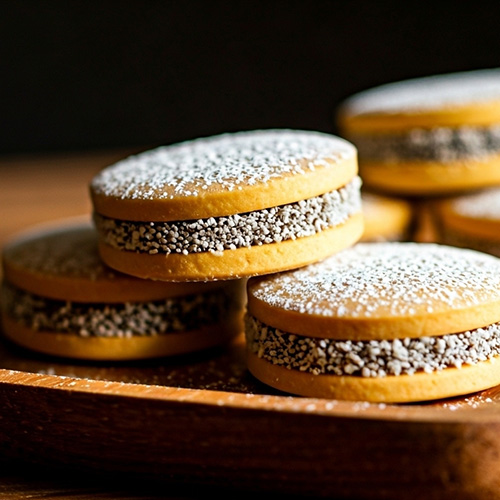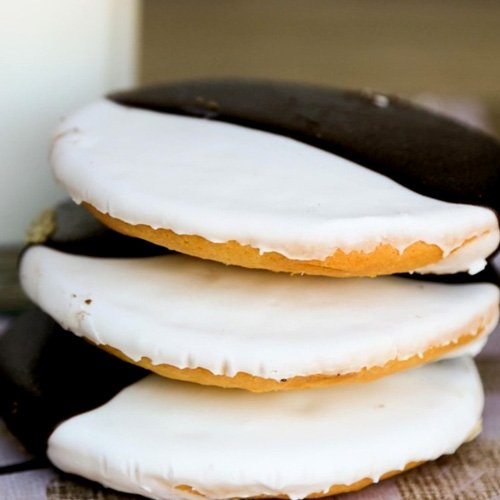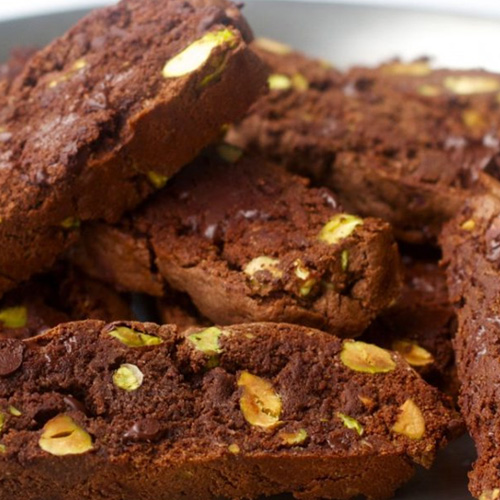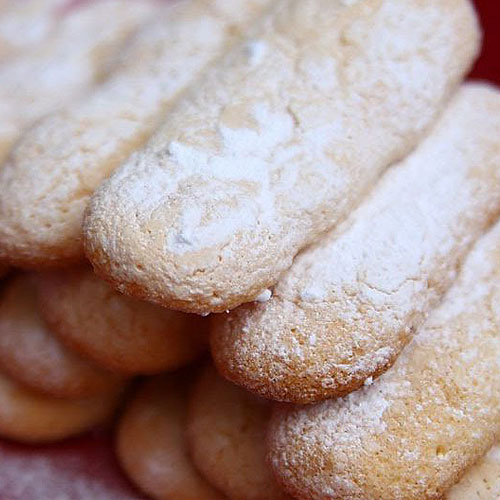Argentine Alfajores de Maicena: A Cookie with a Rich History
These classic delicate sandwich cookies filled with creamy dulce de leche aren’t just another dessert. They’re soft, crumbly, and nostalgic. But beyond their addictive texture lies a story that spans centuries and continents. From Moorish Spain to the heart of South America, the alfajor has transformed from a spiced honey treat into one of Argentina’s most beloved confections.
The word alfajor traces back to the Arabic “al-fakhor,” meaning luxury. And that’s exactly what early versions were luxurious treats made with ground nuts, spices, and honey. Introduced to Spain during the Moorish rule, alfajores were often shaped like logs and wrapped in paper, especially popular around holidays.
When Spanish colonizers brought the concept to Latin America in the 1500s, it took root in many regions. But in Argentina, the alfajor evolved into something truly unique. Fast forward a few centuries, and the alfajor in Argentina became a culinary icon. Its modern form, two soft cookies made primarily with cornstarch (maicena) and filled with dulce de leche, now found in bakeries, lunchboxes, gas stations, and gourmet shops alike.
Some are rolled in coconut, others dipped in chocolate, and many are simply dusted with powdered sugar. But no matter how they’re dressed, they all share that irresistible texture and flavor that make them so beloved.
Alfajores de Maicena Are Special
Unlike shortbread or sugar cookies, maicena alfajores are all about delicacy and softness. The high cornstarch content creates an almost melt-in-your-mouth experience. When sandwiched around a generous spoonful of dulce de leche, they become the ultimate comfort food: rich, tender, and perfectly sweet.
Alfajores aren’t just a sweet, they’re a part of everyday Argentine life. Children grow up eating them at school, adults pair them with coffee, and travelers can’t leave Argentina without trying one (or ten). Even international brands like Havanna have helped turn the alfajor into a global export.
Traditional homemade dulce de leche recipe
Dulce de Leche gives you that rich, golden caramel flavor perfect for alfajores, thick, spreadable, and deeply smooth.
Ingredients:
1 can (14 oz / 396g) sweetened condensed milk (just one ingredient!)
Method 1: Stovetop (in can traditional and most flavorful) Needs monitoring and caution!
Instructions:
- Remove the label from the can of sweetened condensed milk.
- Place the unopened can in a large deep pot, on its side.
- Fill the pot with water until the can is completely submerged with at least 1–2 inches of water above it.
- Bring water to a gentle boil, then lower to a simmer.
- Simmer for 2 to 3 hours:
- 2 hrs = lighter, softer dulce de leche
- 3 hrs = darker, thicker, richer (better for alfajores)
- Check the water every 30 minutes and add hot water as needed to keep the can submerged at all times.
- Once done, carefully remove the can using tongs and let it cool fully (1–2 hours) before opening.
Never open while hot — pressure can cause it to spurt or burn.
Method 2: Baking, slightly less rich in flavor (no boiling, safer)
Instructions:
- Preheat oven to 425°F (220°C).
- Pour 1 can of sweetened condensed milk into a shallow glass or ceramic baking dish.
- Cover tightly with foil.
- Place dish inside a larger baking pan and create a water bath by filling the outer pan with hot water halfway up the sides.
- Bake for 1.5 to 2 hours, checking occasionally to ensure water doesn’t evaporate. Add more if needed.
- Remove, whisk until smooth, and cool.
Storage for Homemade Dulce de Leche
Refrigerator: Store in an airtight glass jar or container with a lid. Up to 2 weeks.
Let it come to room temperature before using, or microwave gently (10–15 sec) to soften if too firm.
Freezer: Use a freezer-safe airtight container or silicone ice cube tray for small portions. Up to 3 months
To thaw: Place in the fridge overnight, then let come to room temp before using.
How to Store Argentine Alfajores
Argentine alfajores, with their melt-in-your-mouth texture and rich dulce de leche filling, are best enjoyed fresh, but they also store beautifully with a little care. Unfilled cookies can be kept at room temperature in an airtight container for up to a week or frozen for up to two months, making them ideal for prepping ahead. Once assembled, alfajores filled with dulce de leche and rolled in coconut or powdered sugar can be stored at room temperature for 2 to 3 days, while chocolate-covered or soft-filled versions last 5 to 7 days in the refrigerator. For longer storage, assembled alfajores can be frozen individually wrapped and layered in airtight containers for up to two months, just thaw them in the fridge and bring to room temperature before serving. Whether you’re baking in bulk or saving a few for later, proper storage keeps their texture tender and their flavor intact.













